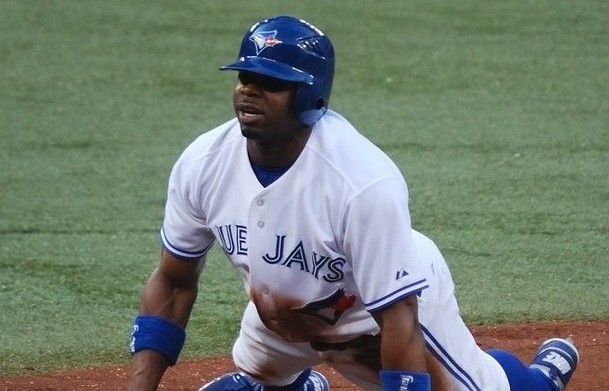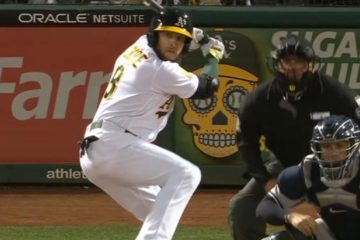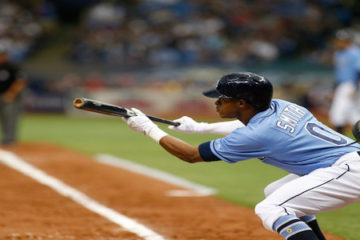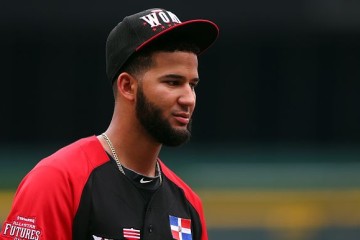2017 Fantasy Baseball: The Fielding Chronicles– Oakland Athletics

The Moneyball movie renewed some interest in Billy Beane and the Athletics. The movie caused some cognitive dissonance due to the dated material in the book. They seemed to eschew fielding and therefore some fans were confused. The truth is that the A’s (along with other teams) have altered their philosophies over the years to adapt to the evidence that advanced metrics have provided. A lot of it deals with market inefficiencies and that is an entire article (or series of articles) by themselves.
The truth of the matter is that the A’s are forced to look for undervalued players wherever they can find them. That sometimes means they might have to accept a substandard fielder or a player that has less patience than they would like. So, their lineup may not have the same kind of cohesion that those Moneyball lineups had. That’s because there are fewer market inefficiencies than there were before. That’s the price of success and knowledge.
We are using the Fielding Bible to evaluate each team’s fielding. We look at fielding to see which players will get to play more often and which pitchers will benefit from the fielding going on behind them. Billjamesonline.com has data for both teams and individual players. Additionally, we will look at each team’s defense efficiency rating according to baseball-reference.com.
Team Overview
| Infield | Outfield | Shifts | Total | Rank | DER | Rank | |
| 2014 | +12 | +11 | +10 | +33 | 4th | .710 | 2nd |
| 2015 | -8 | +12 | +4 | +8 | 11th | .691 | 8th |
| 2016 | -63 | -20 | +12 | -71 | 15th | .685 | 13th |
The Athletics and Rays are at the bottom of the revenue curve, so their fielding numbers are an interesting study in the importance of fielding. As time has gone on they have gotten worse because fielding has become steadily more valuable as more teams have picked up on how to accurately rate fielding. In other words, as good fielders have become more expensive, the Rays and Athletics have not been able to afford it. So, they are destined to look for the next area of inefficiency.
The A’s have to cut corners and they’ve done It with the gloves. Instead, they seem to using platoons to cut down on prices of player salaries. A solid left handed bat may not be able to hit lefties and because of that may cost a fraction of what a full-time player will cost. Yet, they will face righties 80 percent of the time. Obviously, that will have an effect on their fantasy value as they won’t get the same number of plate appearances as others.
Strongest Fielder
One of the platoon figures is Yonder Alonso at first base. He has been plus 15 runs over the past three seasons, but he is not a particularly gifted offensive player. First base represents an interesting case study into what the Athletics are doing. They have Ryon Healy, Trevor Plouffe, and Alonso who can all play first base. This doesn’t even include Stephen Vogt who can catch and play first base. They will be doing a lot of mixing and matching this season. Fielding will likely play a part in those decisions, but platoon splits, and monitoring offensive performance will also play a role as well.
Weakest Defender
Sometimes it’s hard to know what some players bring to the table. Jed Lowrie is one of those players. In good times he was a productive middle infielder that could get on base and hit for power. Most of the time he is either on the disabled list or not producing. He hasn’t produced with the glove either as he has been minus 21 runs over the past three seasons. He would seem to be the first guy on the list to be replaced by a better veteran or hot prospect.
Key Changes
One the hallmarks of being a bottom revenue team is that change is a constant. The club added Ryon Healy to their lineup last season and he seems destined to play somewhere. That will either be at third base, first base, or designated hitter. The other positions will be manned by a combination of Trevor Plouffe, Yonder Alonso, and Stephen Vogt. Plouffe fell out of favor in Minnesota when he struggled to stay healthy, but the A’s hope they can squeeze every bit of juice out of him by limiting his exposure. He was a positive impact fielder at third and first there, so they hope he will be the same.
The outfield adds Rajai Davis and Matt Joyce. They are both affordable bats that offer some limited offensive value if their opportunities are managed for bargain basement prices. Neither player adds anything defensively. The A’s hope they produce offensively and don’t hurt them too much on the defensive end. Either way, the A’s outfield looks to be one of the worst in baseball.
The Pitchers
Fly ball pitchers are out of the question under normal circumstances and that is especially true on a squad that features these outfielders. Unfortunately, the infielders may not be a whole lot better this time around. Kendall Graveman would normally be a prime target as a sleeper with his outrageously high 56 percent rate over the past three seasons, but this defensive infield makes any pitcher squirm. He’s off to a very strong start, but fielding numbers are an aggregate game. You can lose big time betting on short term results.
Similarly, Jharel Cotton would seem to be a low percentage play with his high fly ball rate. He has been good so far, so it bears watching what his batted ball numbers look like. He had a 36 percent ground ball rate last season and with three negative impact defenders out there, that could end up getting ugly sooner rather than later.




